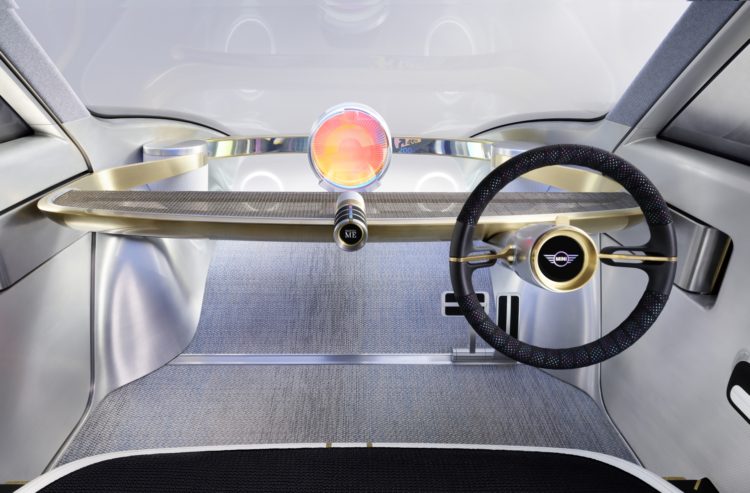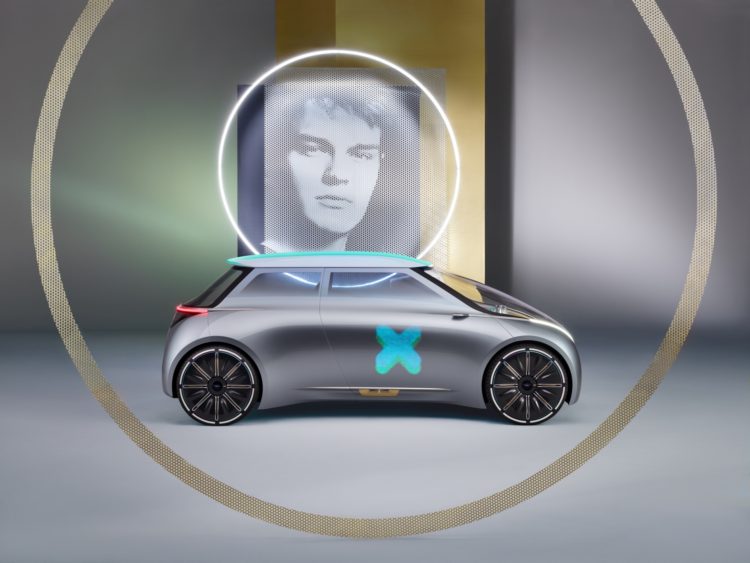Back in 2016, MINI unveiled the Vision NEXT 100, a futuristic concept designed not to preview the next year’s model but to imagine what personal mobility might look like decades from now. Created as part of BMW Group’s centenary celebration, the car explored how MINI’s values—small footprint, fun driving, and individuality—could evolve in a world of autonomous driving, car sharing, and connected services.
Shape-Shifting Exterior and a Smarter Core
The MINI Vision NEXT 100 was built around the idea that the car itself would no longer need to be owned. Instead, it would be part of a shared fleet—a MINI could show up wherever you were, adjust to your preferences, and feel like your own. To make that happen, MINI imagined a vehicle with a shape-shifting exterior, covered in a smooth silver “blank canvas” skin. The surface could change color and patterns depending on the user, effectively making it feel custom without being physically changed.
At the center of the interior was the “Cooperizer”, a circular control interface that glowed and shifted in color. This wasn’t just a light show—it was a way to signal what mode the car was in, whether autonomous or manual, relaxed or energetic. It also controlled things like infotainment and climate settings, tailoring the cabin to whoever was inside.
The “Every MINI is My MINI” Idea
One of the most forward-thinking elements was the idea that people wouldn’t own MINIs at all. Instead, you’d access one through a digital platform, and it would arrive already set up to your profile—preferred steering feel, entertainment choices, seat position, even how it looked on the outside. It was a vision of mobility as a service, not a product.
Less Stuff, More Substance
Inside, the concept kept things minimal. Most physical controls were removed, replaced by projections and touch-sensitive surfaces. The materials were sustainable and recyclable—long before every automaker started talking about circularity. The car wasn’t about luxury; it was about smart use of space and resources.
What Actually Made It to Production?
While the Vision NEXT 100 didn’t become a production car, some of its ideas have found their way into real MINIs:
- The new circular OLED display in the 2025 MINI Cooper Electric takes clear cues from the Cooperizer. It also functions as the main command center for drive modes, ambient lighting, and infotainment.
- MINI Experience Modes, now found in production cars, allow the cabin to shift personality with sound, visuals, and lighting—very similar to what the Cooperizer hinted at.
- The push toward sustainability is visible in MINI’s current lineup. The newest cars feature leather-free interiors, recycled textiles, and a simplified materials approach that aligns with the concept’s goals.
- As for shared mobility, MINI hasn’t fully leaned into the “Every MINI is My MINI” vision yet. But features like Digital Key Plus, remote app integration, and potential subscription models suggest that infrastructure is being built.
- Spike, the MINI Personal Assistant: Introduced in current MINI models, Spike is a digital character and voice assistant that can take natural language commands, adjust vehicle settings, provide navigation help, and add personality to everyday interactions—echoing the Vision NEXT 100’s goal of a more human-centered, intelligent interface.
A Future Still in Progress
The MINI Vision NEXT 100 didn’t just explore what a MINI could be. It questioned how we might relate to cars altogether. While not everything has materialized—autonomous pickups and full personalization-on-demand are still some years off, if ever coming—many of the concept’s themes have slowly started appearing in MINI’s electrified lineup.
It may have looked like science fiction in 2016, but some of that future is already sitting in showrooms today. This is why it’s even more interesting how BMW will bring MINI into their Neue Klasse world after 2030.







